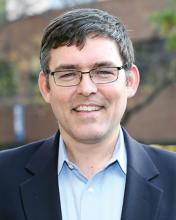Earlier this year, the Centers for Medicare and Medicaid Services finalized fundamental changes to how it reimburses hospitals for uncompensated care costs. When first proposed, the move raised alarm among physicians, hospitals, health systems, state health departments, and others around the country, and even prompted a lawsuit in New Hampshire.
In the months since the official adoption by the CMS, it remains unclear how the change will affect hospitals around the country, particularly the safety net hospitals that rely on these payments most.
The rule alters the formula previously used to determine disproportionate share (DSH) payments, meant to fill in the gap for those hospitals treating large numbers of Medicaid and uninsured patients. The change is a reinterpretation of regulations that the CMS says have been codified but unenforced since the Omnibus Budget Reconciliation Act of 1993, that say the agency will reimburse DSH-qualified hospitals for the uncompensated costs they incur providing care (inpatient and outpatient) to Medicaid-eligible and uninsured patients. The agency argues that payments made on behalf of these same patients by Medicare, the patients themselves, and other third-party party payers should be considered revenue and not contribute to individual hospitals’ DSH limits. Previously, the CMS primarily based payments on the number of Medicaid and uninsured patients any given hospital treated.1
In its final rule issued in April 2017 and finalized on August 2, 2017, the federal agency said the intent of the change is to more fairly distribute a fixed amount of DSH funds to the hospitals most in need. It also argued the change is a more consistent interpretation of the existing statute [Section 1923(g)], provides clarification around language that has been the subject of inquiry over the last decade, and promotes what it calls “fiscal integrity.”
“These allotments essentially establish a finite pool of available federal DSH funds that states use to pay the federal portion of payments to all qualifying hospitals in each state,” the final rule reads. “As states often use most or all of their federal DSH allotment, in practice, if one hospital gets more DSH funding, other DSH-eligible hospitals in the state may get less.”
This is not, however, the way all parties see it. For instance, in a comment submitted to the CMS in September 2016, the National Association of Urban Hospitals expressed its concern that DSH payments already are inadequate to cover the financial burden associated with providing care in low-income communities, such as translation services and the costs of employing physicians to practice in more challenged settings.2
In a letter to the CMS, the Minnesota Department of Human Services said it agrees with the agency that DSH payments should not be used to “subsidize costs that have been paid by Medicare and other insurers” but disagrees with the agency’s approach. Its argument includes a challenge to the CMS’ statutory authority to change the formula based on existing language.3
“I think the reason it’s contentious is because when you’re dealing with a fixed dollar amount and you’re talking about redistributing dollars, someone is going to lose,” said John McHugh, PhD, professor of health management at the Mailman School of Public Health at Columbia University. “A facility receiving DSH payments is already dealing with high levels of uncompensated care; the hospitals are operating on very thin margins. They are very often getting by because of these payments.”
Despite the CMS’ seemingly good intentions, Bradley Flansbaum, DO, MPH, MHM, a hospitalist at Geisinger Health System and member of the SHM Public Policy Committee, remains skeptical that the hospitals that need and deserve DSH payments will actually see more redistributed in their favor.
“Inner city, safety-net hospitals are always fighting for a piece of the pie,” he said, noting that a percentage of larger health systems and midsized hospitals also take advantage of DSH payments. “Their payer mix is more favorable, yet they game the system for these funds,” Dr. Flansbaum added.
If hospitals in need see fewer DSH dollars, Dr. McHugh noted, they will feel the squeeze.
“It’s not easy to operate safety net hospitals,” he said. “And on top of that, hospitals have been operating under a certain assumption and it’s changing, and it takes time to incorporate those changes. There will probably be some fallout for the first couple of years as hospitals are adapting their practices. It could mean loss of services. It could mean the loss of quality physicians and quality staffing, and that can impact patient care.”

